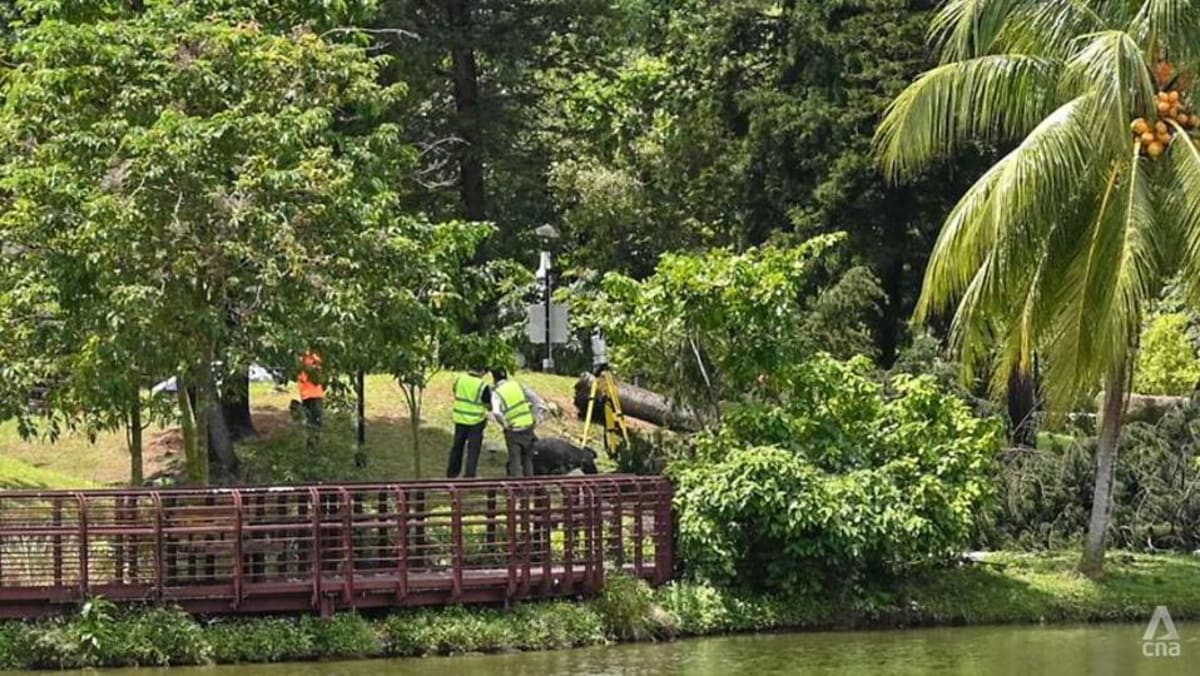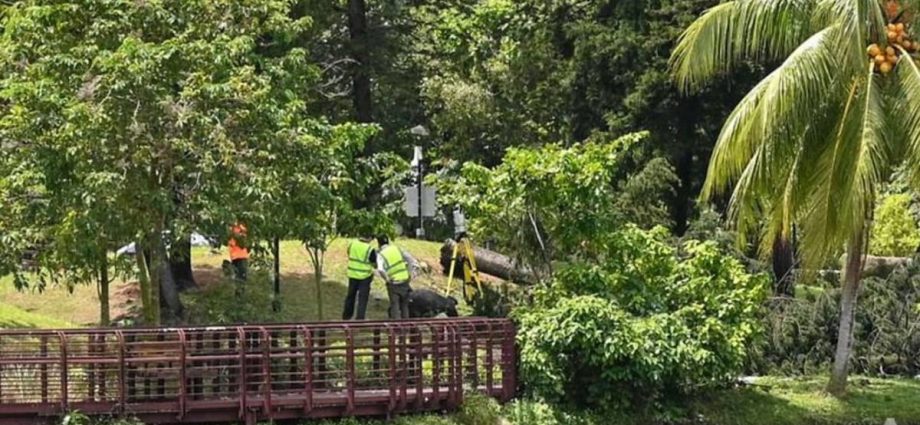
SINGAPORE: A tree that fell in Marsiling Park and fatally pinned a jogger under it in February last year was infested with a type of underground termite in a rare case, a coroner’s court heard on Thursday (Oct 13).
Ms Loke Xiao Li Dag, a senior technical coordinator at CNA studio, had died aged 38 after being pinned by the tree on the morning of Feb 18, 2021.
The inquiry into her death opened on Thursday, with an investigating officer and a director from the National Parks Board (NParks) taking the stand. Ms Loke’s parents and brother sat in the hearing, with her father placing his arm around his wife for most of the hearing.
NParks’ group director of the streetscape division, Mr Oh Cheow Sheng, testified that the 20m-tall Araucaria excelsa tree was found to be infested with a subterranean species of termite after it fell.
The termites had entered the tree trunk from below the ground and did not leave any externally visible sign, said Mr Oh.
As the living tissue of part of the tree was still functioning, water and nutrients could be sent to the upper part of the tree, so the foliage did not show any sign of poor health, he said.
Mr Oh explained at length the levels of inspection that NParks has for its trees. NParks manages about six million trees in Singapore, including about two million that are planted in parks, roads, state land and in urban areas.
NParks’ inspection regime is aligned with best management practices of the International Society of Arboriculture (ISA), the largest professional body for tree management in the world, said Mr Oh.
There are two levels of inspection by NParks: First, a visual tree assessment called a VTA that involves a detailed visual inspection of an individual tree based on a comprehensive checklist.
The second level of inspection is an advanced inspection that is more rigorous and stringent as well as invasive. Advanced inspections are conducted only in certain conditions, including if a VTA reveals external signs and symptoms of poor tree health or internal defects.
Mr Oh explained that advanced inspections are not a blanket first measure for trees as it is very costly and it is neither practical nor financially feasible to do so.
In the past 12 years, there have been only three cases of “tree failure” where trees fell because of subterranean termite infestation, said Mr Oh.
None of these were Araucaria trees, which was the tree that fell on Ms Loke. Araucaria trees are not susceptible to termite infestation, he said.
SPECIFIC TREE FOUND TO BE HEALTHY IN LAST INSPECTIONS
The specific tree was last inspected in April 2020, with a VTA conducted before that in 2018 and 2016. The tree inspection forms for each of these inspections did not record any external sign of termites or subterranean termites.
In fact, the tree was recorded to be in healthy condition with excellent rigour, with no decay or cavities and no sign of termite infestation, said Mr Oh.
As there was no external sign of poor health, NParks did not conduct an advanced inspection, he said.
After the incident, arborists visually inspected other Araucaria trees in Marsiling Park and drenched the root zones with termiticide as a precautionary measure.
Mr Oh said that the presence of subterranean termites is usually detectable via external signs. The insects would form mud tracks along the trunk of the trees, and a mound can sometimes be found beside the trees.
There will also be faecal pellets and the tree may at times show an overall decline in tree health. However, in this case, there was no such sign.

